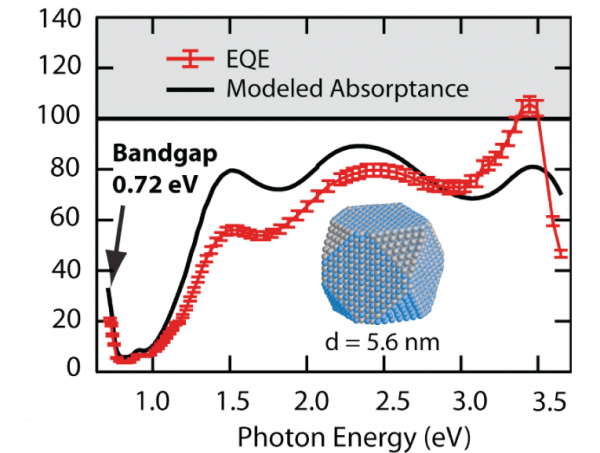According to reports, researchers at the National Renewable Energy Laboratory (NREL) announced at the beginning of this year that the use of quantum dot materials to produce a solar cell with an external quantum efficiency (EQE) of more than 100% confirms multiple exciton generation. The significance of the (MEG) effect on the research of future high-efficiency solar cells.
NREL's test structures include anti-reflective coated glass, transparent conductive layers, nanostructured zinc oxide layers, and lead selenide quantum dot layers treated with ethanedithiol and hydrazine. This study is the first time that the quantum efficiency of quantum dot solar cells has exceeded 100%. With no optimization, the battery conversion efficiency is only 4.5%. Although the efficiency is relatively low, the generation of multiple excitons in the photocurrent of the solar cell still has important significance. This result has opened up a new path for increasing the efficiency of solar cells.
The external quantum efficiency refers to the ratio of the number of electrons generated from a solar cell per unit time to the number of photons irradiated on the surface of a solar cell per unit time. The NREL battery has a photon external quantum efficiency of energy of 3.5eV of 114%. The quantum efficiency of more than 100% means that the solar cell absorbs a single high-energy photon and generates multiple excitons, the so-called multi-exciton generation effect. In a conventional crystalline silicon solar cell, the energy portion of high-energy photons higher than the bandgap of the semiconductor material will dissipate in the form of heat (phonons), which is one of the main factors that limit the theoretical efficiency of the conventional battery. Quantum dot materials can confine carriers to their tiny volume, generate multiple excitons, and make full use of the energy of high-energy photons, which greatly improves efficiency and converts photons into more electrical energy.

The NREL battery has a photon external quantum efficiency of energy of 3.5eV of 114%. The quantum efficiency exceeds 100%, which means that solar cells absorb single high-energy photons and generate multiple excitons, so-called multiple exciton generation effects.
At present, domestic research institutes have begun to study the generation of multiple excitons, and the National Natural Science Foundation of China’s National Natural Science Foundation of Nanjing University’s Micro-Nano Optics and Ultrafast Optics Laboratory “Study on Multiple Exciton Generation of Semiconductor Nanomaterials†has been awarded 900,000 yuan. Yan Qingling Industrial Research Center of Taiwan University is also conducting research on multi-exciton quantum dot polymer solar cells. In addition, Zeng Yiping, a researcher at the Materials Science Center of the Institute of Semiconductors, Chinese Academy of Sciences, and Professor Tang Jiang from the Wuhan National Laboratory for Optoelectronics have also published review articles on this issue.
Chrome Mirror Effect Powder Coating
Piano Powder Coat,High Glossy Powder Coating,Black Mirror Effect Powder Coating
Metallic Powder Coating Co., Ltd. , http://www.nsralcolour.com